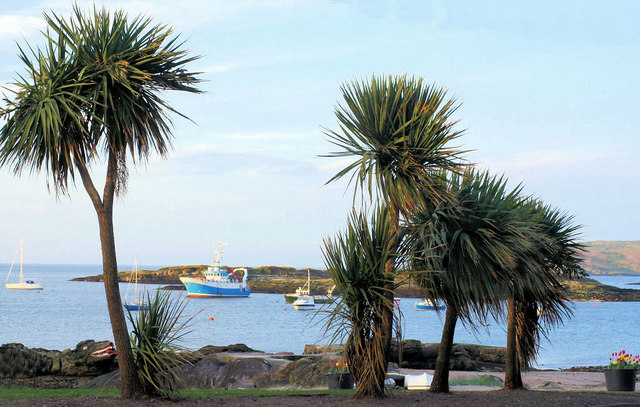In 1921 an American engineer called Paul F. Godley
accompanied a member of the Marconi company to a site in Ardrossan on the North
Ayrshire coast. Once there the pair set
up a receiver station which was to pave the way for the first transatlantic short
wave radio transmission from the USA,
from Greenwich, Connecticut.
The receiver, a Beverage class, was the first of its kind to be used in
the United Kingdom,
and the experiment was a complete success.
There is a plaque commemorating the event on the front wall of the
Abbotsford Nursing Home, which stands near the chosen site.
Ardrossan is a historic port which grew in importance thanks
to its shipbuilding activities during the 18th and 19th centuries, as well as
the export of coal and pig iron to Europe and America. Today's maritime activity is focused on the
Clyde Marina, while there is a ferry service linking Ardrossan to Brodick on
the Isle of Arran and a new ferry service which started just a few days ago
between Ardrossan and Campbeltown on the Kintyre Peninsula. Cannon
Hill, or Castle Hill, is an elevated recreation area and is also the site of Ardrossan Castle, dating as far back as the 12th
century. The neighbouring community of
Saltcoats, a former fishing village that was made a burgh in 1528, merges
almost seamlessly with Ardrossan. The
name derives from the fact that salt used to be harvested from the sea
here. Shipbuilding also formed part of
the local economy. Recreational
activities include golf courtesy of the Auchenharvie Golf Course.
Map of the area.
Map of the area.
 |
| Ardrossan North Beach. Photo by Roger Griffith, via Wikimedia Commons |











